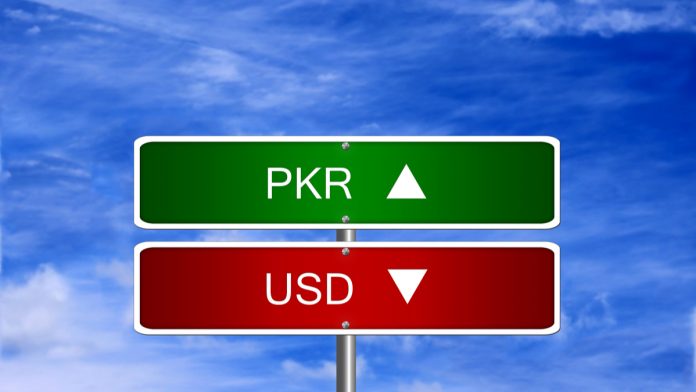- Pakistan Rupee (PKR) edges lower paring gains
- Pakistan exports over $2 billion in November for 2nd straight month
- US Dollar (USD) moves lower versus major peers on risk outflows
- US NFP in focus
The US Dollar Pakistani Rupee (USD/PKR) exchange rate is advancing on Friday, paring gains from the previous session. The pair settled -0.15% lower on Thursday at 159.78. At 09:15 UTC, USD/PKR trades +0.17% at 160.05. The pair is on track to end the week at approximately the same level that it started the week.
According to the State Bank of Pakistan (SBP) Pakistan exports have staged a solid recovery despite a resurgence of covid across the globe.
The central bank revealed that data from the Pakistan Bureau of Statistics showed a sharp increase of exports across the year.
Pakistan’s exports recorded over $2 billion for a second consecutive month in November, registering a 7.2% increase from the same month a year ago.
According to provisional data shared by the Commerce Ministry, exports in the first 5 months of the fiscal yer (July – November) were $9.732 billion.
The US Dollar is pushing higher versus the Rupee; however, it is losing ground versus its major peers. The US Dollar Index which measures the greenback against major currencies trades -0.1% lower at 90.64 a fresh 2.5 year low as vaccine optimism and hopes of more US economic stimulus drags boosts risk sentiment at the detriment of the US Dollar.
Looking ahead attention will turn to the US non-farm payroll. Expectations are for a more modest gain in November payrolls after steep jump in the previous month.
468,000 new jobs are expected to have been added in November after an impressive 638,000 in the previous month. The unemployment rate is expected to tick lower to 6.8% from 6.9%.
Leading indicators this month point to a weaker than forecast NFP print. ADP private payrolls came in well under forecast and ISM manufacturing PMI employment subcomponent also contracted, although the ISM services PMI employment component edged higher.





